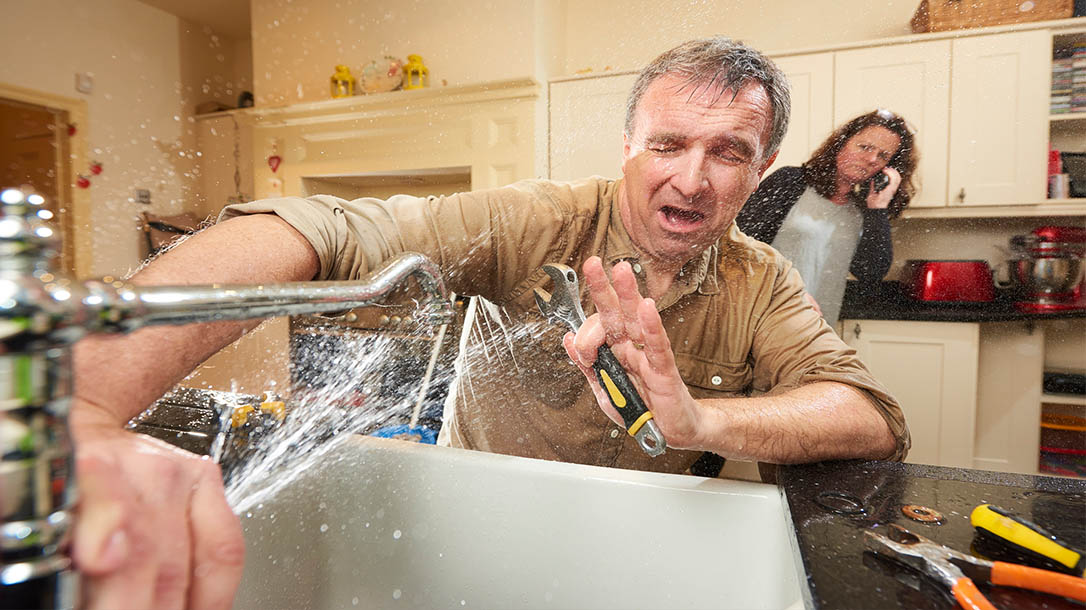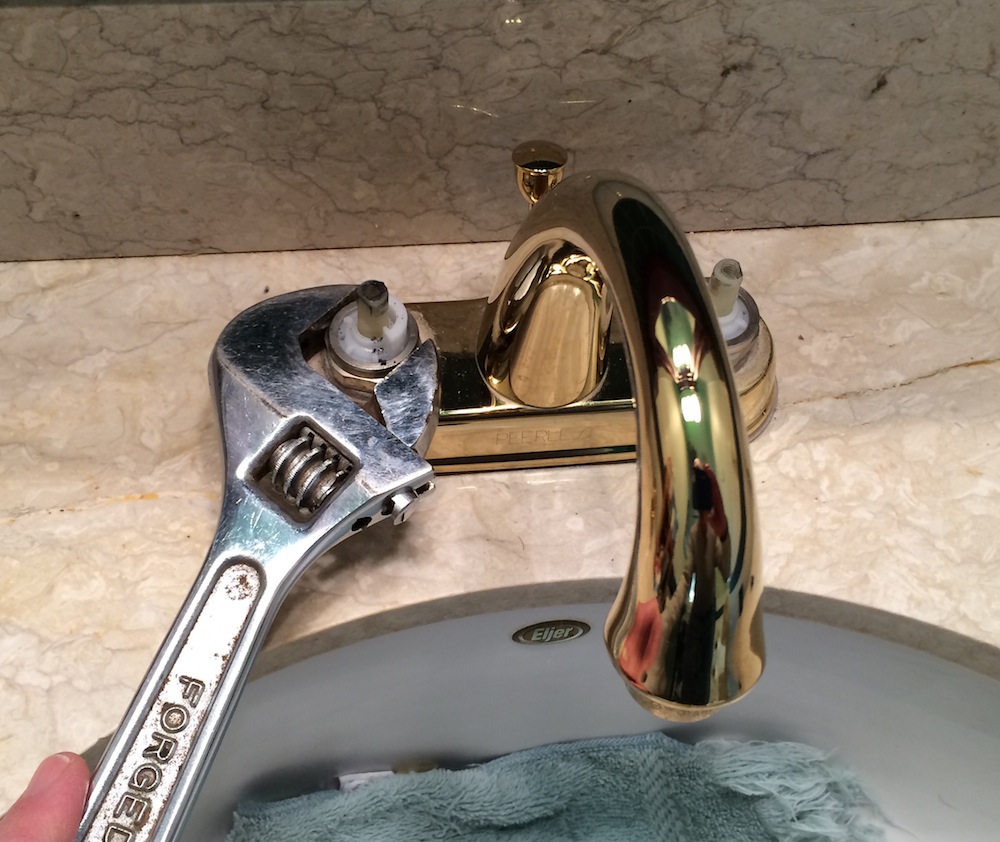How do you actually feel with regards to 4 Common Reasons for a Leaky Faucet?

Leaking taps may seem like a minor trouble, yet their impact exceeds simply the annoyance of the sound. From drainage to sustaining unneeded financial costs and health and wellness threats, ignoring a dripping faucet can cause different effects. In this write-up, we'll look into why it's crucial to resolve this usual house problem immediately and effectively.
Wastefulness of Water
Ecological Impact
Leaking faucets contribute dramatically to water waste. According to the Epa (EPA), a single faucet trickling at one drip per second can waste greater than 3,000 gallons of water each year. This not only strains water sources however likewise affects ecosystems and wild animals dependent on them.
Financial Prices
Boosted Water Bills
Beyond the ecological impact, trickling faucets can pump up water bills considerably. The built up waste over time equates right into higher energy expenses, which might have been avoided with timely fixings.
Potential Property Damage
Additionally, long term dripping can cause harm to components and surfaces surrounding the faucet. Water build-up can trigger discoloration, deterioration, and also architectural concerns if left neglected, causing additional repair costs.
Health Issues
Mold And Mildew and Mold Growth
The continuous existence of moisture from a dripping faucet develops an optimal atmosphere for mold and mildew development. These fungis not only compromise indoor air quality yet likewise position health threats, especially for individuals with breathing conditions or allergic reactions.
Waterborne Illness
Stationary water in leaking faucets can come to be a breeding place for bacteria and various other microorganisms, raising the danger of waterborne diseases. Pollutants such as Legionella bacteria thrive in stationary water, possibly causing serious diseases when consumed or breathed in.
Do it yourself vs. Professional Repair
Advantages and disadvantages of Do It Yourself Repair Service
While some may attempt to take care of a dripping faucet themselves, DIY fixings come with their own set of difficulties. Without correct expertise and devices, DIY attempts can intensify the problem or cause insufficient repair services, lengthening the problem.
Benefits of Hiring an Expert Plumber
Hiring a professional plumber guarantees that the underlying cause of the dripping tap is resolved properly. Plumbers have the experience and devices to identify and repair faucet concerns effectively, saving time and decreasing the danger of further damages.
Step-by-Step Overview to Fixing a Dripping Tap
Tools Called for
Before trying to deal with a leaking faucet, collect the required devices, including a flexible wrench, screwdrivers, replacement parts (such as washing machines or cartridges), and plumber's tape.
Typical Tap Issues and Their Solutions
Identify the type of faucet and the details problem triggering the drip. Usual issues consist of worn-out washing machines, corroded valve seats, or damaged O-rings. Refer to maker guidelines or online tutorials for step-by-step advice on repairs.
Preventive Measures
Routine Upkeep Tips
To stop trickling taps, perform regular maintenance such as cleansing aerators, examining for leakages, and replacing worn-out parts quickly. Furthermore, think about setting up water-saving devices or upgrading to more efficient components.
Relevance of Prompt Fixes
Resolving leaking faucets as soon as they're seen stops additional water wastage and possible damages, eventually conserving both water and cash in the long run.
Effect On Residential Property Value
Assumption of Well-Maintained Residential Property
Preserving a residential or commercial property in good condition, consisting of dealing with upkeep issues like trickling faucets, improves its regarded value and desirability among possible buyers or renters.
Impact on Resale Worth
Qualities with properly maintained plumbing fixtures, including taps, command greater resale worths in the real estate market. Dealing with leaking taps can contribute to a favorable impact throughout property evaluations and settlements.
Environmental Obligation
Private Contribution to Conservation
Taking obligation for repairing leaking faucets aligns with broader initiatives towards water preservation and ecological sustainability. Every individual's actions jointly make a substantial effect on protecting precious sources.
Lasting Living Practices
By prioritizing prompt fixings and embracing water-saving practices, people add to sustainable living practices that profit both present and future generations.
Verdict
Attending to a dripping tap goes beyond plain benefit; it's a crucial step towards saving water, lowering monetary prices, and securing health and residential property. Whether through DIY fixings or professional support, doing something about it to fix leaking taps is a tiny yet impactful means to promote accountable stewardship of resources and add to a much healthier, much more sustainable future.
How to Fix a Leaky Faucet: Step-by-Step Repair Guide
A leaky faucet may seem like a simple annoyance, but if it's not fixed promptly, that leak could cost hundreds to potentially thousands. From water damage to mold, mildew, and high water bills, even a tiny leak can be catastrophic if left unattended. Damage like this can even affect the overall value of your home, so it's important to take the right approach for leaky faucet repair. You may need the help of a plumber in some cases, but we've got a few tips you can try on how to fix a leaky faucet before calling the pros.
Four Faucet Types
When you're learning how to fix a leaky faucet, the first step is knowing what kind of faucet you're working with! There are four common types.
Cartridge Faucets
Cartridge faucets come in one- or two-handled varieties. In one-handled cartridge faucets, hot and cold water combines in a single cartridge. In the two-handled versions, hot and cold water are controlled separately and mixed in the faucet.
Ball Faucets
Ball faucets have a single lever you push up and down to adjust the pressure and rotate to change the temperature. A slotted metal ball controls the amount of water allowed into the spout.
Compression Washer Faucets
They're the oldest type of faucet, but they're still used in many homes — especially older ones. Compression faucets have two separate handles that, when turned, raise or lower the washer that seals a water valve. This valve stops water from flowing through the faucet when it is turned off.
Disc Faucets
Disc faucets rarely need to be repaired due to their maintenance-free design. The water flow is controlled by two discs — the upper one raises and lowers against a fixed lower disc, creating a watertight seal. If your disc faucet starts leaking, you may need to replace the seals or clean residue buildup from the inlets.
Fixing a Leaky Faucet
Step 1: Turn Off the Water
Whether you're learning how to fix a leaky bathtub faucet or how to fix a leaky kitchen faucet, always turn off the water supply to your working area when you're fixing a leak. The last thing you want is a flood added to your list of things to fix.
Look for the shutoff valves below your sink or around the tub and turn them clockwise to stop the water flow. If your faucet doesn't have shutoff valves, you may need to turn off the water for the whole house. Check to make sure it's off by turning the faucet on. If nothing comes out, you're ready to start the repair.
Step 2: Take Apart the Faucet
How you disassemble your faucet depends on the type of fixture you have. You can use a flathead screwdriver to remove the caps on top of the handle or handles for cartridge and compression faucets. Inside, you should see handle screws. Unscrew these with a screwdriver to remove the handle.
Disc- and ball-style faucets will typically have an inlet screw near the handle, and removing that will reveal the interior of the faucet.
Detach the Valve Stem
For cartridge- and compression-style faucets, you'll see the inner valve stem or cartridge once you remove the faucet handles. If you have a compression faucet, unscrew the brass valve stem. If you have a cartridge faucet, pull out the cartridge. If your cartridge has been in place for a while, it may require some tools or extra force to remove it due to mineral deposits.
Examine and Replace Parts
Once you've removed the parts, check them out to confirm what needs to be replaced. You may see corroded rubber washers, O-rings, stems, or cartridges. On a ball-style faucet, check the seats and springs for damage.
If you need to repair a leaky disc faucet, check the inlet and seals on the lower disc.
Once you determine what parts must be replaced, visit your local hardware store. Bring the damaged parts with you to ensure you can purchase the correct components to replace them.
Clean Valves and Faucet Cavity
If you've removed a stem or cartridge, you may notice mineral buildup in the faucet's threads. Use white vinegar to clean the valve seat by soaking it for a few minutes, then scrub it away with a soft toothbrush and rinse with warm water. You can also clean the interior of the faucet in the same way.
Reassemble the Faucet
Once your faucet is cleaned and the required parts have been replaced, it's time to reassemble it. Put the pieces back together and slowly turn the water supply back on. Doing this slowly is crucial because too much initial water pressure can damage the new hardware you've just installed.
https://homewarranty.firstam.com/blog/how-to-fix-leaky-faucet

Do you really like reading about ? Leave a review down below. We would be pleased to find out your insights about this blog. In hopes that you visit us again before long. Sharing is nice. Helping others is fun. Thanks for going through it.